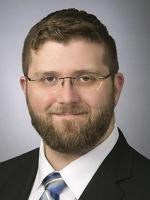On April 18, 2019, Senators Thom Tillis (R-NC) and Chris Coons (D-DE), along with Representatives Doug Collins (R-GA), Hank Johnson (D-GA), and Steve Stivers (R-OH), released a bipartisan framework for 35 U.S.C. § 101 reform, available here. The framework outlines specific goals that any proposed legislation should aim to address.
The impetus for such reform stems from uncertainties in recent case law regarding what qualifies as “patent-eligible” subject matter since the U.S. Supreme Court’s holdings in Mayo Collaborative Services, DBA v. Prometheus Laboratories, Inc., 566 U.S. 66 (2012), and Alice Corporation Pty. Ltd. v. CLS Bank International, 573 U.S. 208 (2014). The relative fluidity of patent eligibility jurisprudence since the Court’s decision in Alice has caused difficulties not only for potential inventors and industry, but also for the patent bar at large. Since the Alice decision, the USPTO has issued new guidance regarding how patent examiners are to analyze claims under section 101 at least once a year, with the exception of 2017. As many practitioners would attest, the application of the guidance can vary between examiners and art units, resulting in general confusion as to what exactly makes one claim patent eligible over another.
The proposed framework, developed following discussions with stakeholders, seeks to remove some of the judicial discretion that has left this era of patent eligibility analysis in a state of indefiniteness. A major aspect of the proposed framework is statutory language expressly reciting subject matter categories that are deemed to be patent ineligible. Currently, Section 101 only recites broad categories of patent-eligible subject matter: namely “any new and useful process, machine, manufacture, or composition of matter.” 35 U.S.C. § 101. The well-known and oft-quoted exceptions were judicially-created. Under the proposed framework, exclusive categories of patent ineligible subject matter would be identified, and any other judicially-created exceptions would be expressly abrogated. The proposed framework also seeks to remove the “new and useful” requirement, simply requiring that “the invention meet existing statutory utility requirements.” This appears to be an attempt to create a firmer division between the patent eligibility determination under section 101 and the analyses under sections 102 and 103.
The rest of the framework is less ground breaking. The framework calls for a “practical application” test to be created, which appears to be consistent with the USPTO’s recent subject matter eligibility guidance issued on January 7, 2019. There is also a call for ensuring that “generic technical language or generic functional language” remains insufficient to salvage an otherwise ineligible claim, though there is no additional indication of how those categories could be more precisely defined to alleviate current issues with examiner’s use of such boilerplate language in rejecting claims. Lastly, the framework restates the requirement that examination is to be conducted in light of all limitations, without regard to the requirements under the other statutory provisions (i.e., sections 102, 103, and 112).
In all, the proposed framework appears to focus on returning the 101 analysis to its previous status as more of a low hurdle to patentability, but a hurdle nonetheless. Many issues caused by recent case law have been attempts to analogize clear cases of ineligible abstract ideas, such as the use of a computer to perform general steps in hedging risk (see Bilski v. Kappos, 561 U.S. 593 (2010)), to more technologically-advanced inventions, such as those directed to data analytics, artificial intelligence, and machine learning. In some cases, examiners and courts have run afoul of the Supreme Court’s warning that too broad an interpretation would eviscerate patent law because “all inventions at some level embody, use, reflect, rest upon, or apply laws of nature, natural phenomena, or abstract ideas.” Mayo, 566 U.S. at 71. Depending on what legislative language (if any) ultimately arises from this proposed framework, it would appear that Congress wants to deemphasize the role section 101 has on the ultimate patentability determination (instead relying on the other statutory requirements) to streamline the analysis.



 />i
/>i
